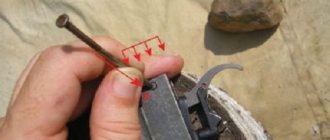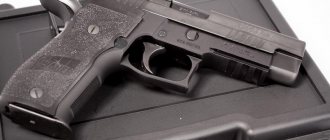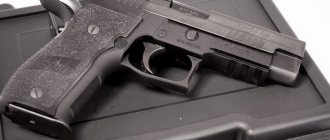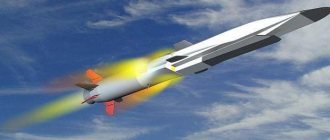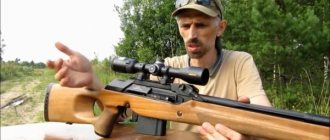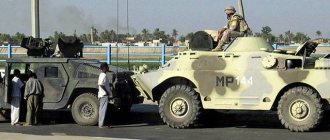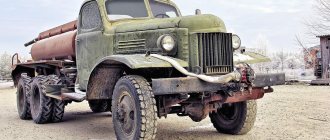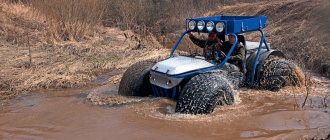Before the start of the Great Patriotic War, there was an original class of tracked vehicles of the small century in the Soviet Union, which were adapted to independently overcome water obstacles. To move on water, the tank simply needed to slide into the water, the driver connected the propeller through the power take-off gearbox, and to change direction while moving, it was necessary to use the steering wheel.
Gradually, the vehicles became obsolete, and they were replaced by the Soviet T-40 tank, which differed from these combat vehicles in its increased seaworthiness and enhanced armament. Such a tank could be used as an armored boat, but the outbreak of war led to the cessation of production of tracked vehicles, and subsequently to the complete disappearance of the class.
History of creation
By the end of the 30s, the Red Army had two types of light amphibious vehicles - T-37A and T-38, created on the basis of the British Carden-Lloyd vehicle. The vehicles had weak armament, but the main problem was low seaworthiness and the lack of possibility of modernizing the design. At the beginning of 1939, development of a project for a new machine began, work was carried out in the bureau of Moscow plant No. 37, N.A. became the chief designer. Astrov. The vehicle, designated 010, was based on the solutions incorporated in the design of the T-38.
By the summer, a batch of 4 cars was built, equipped with suspensions of various designs. A series of prototypes used the American Dodge D5 power unit, since the Soviet analogue had not been mastered by industry. During the tests, shortcomings were noted, which were promptly eliminated. The largest modification was the lengthening and widening of the hull.
At the end of 1939, the Project 010 tank was put into service under the designation T-40; the start of mass production was planned for 1940.
Production continued until the start of the war, and then plant No. 37 was planned to be switched to the production of medium-sized T-50 vehicles. But due to the cancellation of the order in July 1941, the series went into production of a land version (designated in historical literature as T-40S, the index was not used in army documentation), which was distinguished by the absence of propeller lines and some of the components used when moving on water.
The hull retained a niche for installing a screw; some of the sheets began to be made of armor with a thickness of 13...20 mm. Later, the tank was modernized again, strengthening the armament and rearranging the internal compartments. The vehicles were designated T-30, becoming a stepping stone to the creation of a new Project 060 or T-60 vehicle.
A total of 960 vehicles of the T-40, 40C and 30 modifications were produced. The bulk of the vehicles were assembled in Moscow; a number of tanks were released from the parts reserve in Sverdlovsk, where plant No. 37 was evacuated.
Design of the T-40 tank
The T-40 had a typical layout for Soviet light tanks of that time. The tank had five compartments, listed below in order from the front of the vehicle to the rear:
- transmission compartment;
- management department;
- engine compartment on the starboard side of the middle of the hull;
- fighting compartment on the left side of the middle of the hull and in the turret;
- the aft compartment, where the propeller units, the hydrodynamic propeller niche, fuel tanks and the engine radiator were located.
This layout scheme determined the overall set of advantages and disadvantages of the tank within the framework of vehicles of its class. In particular, the front location of the transmission compartment, that is, the drive wheels, led to their increased vulnerability, since it was the front end of the tank that was most susceptible to enemy fire.
On the other hand, unlike Soviet medium and heavy tanks, the T-40's fuel tanks were located outside the fighting compartment in a compartment isolated by an armored bulkhead, which increased the survivability of the crew if the tank was damaged. The crew of the tank consisted of two people - a driver and a vehicle commander.
Armored hull and turret
The armored hull of the tank, designed by engineer A.V. Bogachev, was welded from rolled armor plates with a thickness of 5 to 20 mm. “Land” vehicles of later production were protected by thicker armor compared to early production models of the T-40. Armor protection is differentiated, bulletproof. The armor plates of the hull were connected partly by welding and partly by bolts.
Their complex configuration was determined by the requirements for the ability to move afloat; some of the armor plates (lower frontal, zygomatic and upper side) had rational angles of inclination. A number of hull armor plates (frontal, over-engine, turret and rear plates) were removable for ease of maintenance and replacement of various components and assemblies of the tank. The driver was located centrally in the front of the tank's armored hull. To improve the convenience of its operation, a folding shield was installed on the front part of the body. In a combat situation, the shield was lowered, and the driver conducted observation through a viewing device in this shield, which was also protected by an armored flap. In addition, for ease of observation, “triplex” viewing devices were installed in both zygomatic sheets.
On the roof of the turret armor plate there was a folding hatch for boarding and disembarking the driver. The hull also had a bottom hatch for emergency escape by the crew of the tank and a number of air inlets, hatches, hatches and technological openings for ventilation of the habitable spaces of the tank, draining fuel and oil, access to the necks of fuel tanks and other components and assemblies of the vehicle. A number of these holes were protected by armored covers, flaps and casings. To ensure the waterproofness of the housing, the hatches were installed on rubber gaskets, and the holes for the bolted connections of the parts to the housing were sealed with oakum. Also, embrasures for firing from personal weapons were drilled in the front and side armor plates, which were closed with armor plugs.
The conical round welded turret had sides with a thickness of 15 (for the T-30 - 20) mm, which were located at an angle of 25° to the vertical to increase bullet resistance. The frontal part of the turret had a rectangular niche for installing weapons and an armored mask protecting them. The axis of rotation of the turret did not coincide with the plane of longitudinal symmetry of the vehicle due to the installation of the engine on the right side of the tank and was shifted from this plane to the left.
In the roof of the turret there was a semicircular hinged hatch for the embarkation and disembarkation of the vehicle commander. In turn, there was a small hatch in the hatch for an external flag alarm. The turret was mounted on a ball bearing and secured with grips to prevent it from stalling in the event of a strong roll or overturning of the tank. “Triplex” viewing devices were installed on the sides of the turret behind viewing slots, additionally protected by armored visors. There were also embrasures for firing personal weapons, closed with armored plugs.
Armament
The main armament of the T-40 was the 12.7 mm DShK heavy machine gun. The machine gun was mounted on trunnions in the turret; in addition to the mask, its barrel was additionally protected by an armor casing. The DShK machine gun had a barrel length of 78.7 calibers, the height of the firing line was 1590 mm, and the maximum direct fire range reached 3.5 km. It was paired with a 7.62-mm DT machine gun, located in a single installation with the DShK.
For ease of use of the twin installation, the DShK was shifted to the right of the turret symmetry plane, the DT machine gun was located on the left. The twin installation had vertical aiming angles from −7 to +25° and a circular horizontal firing sector. The horizontal gear-type turret guidance drive was located to the right of the twin installation; it could be turned off to quickly rotate the turret by the tank commander. The vertical screw-type guidance mechanism was located to the left of the twin installation. These mechanisms and machine gun trigger drives were subsequently used in the design of the later production light tank T-60. The DT machine gun could be easily removed from the coaxial mount and used outside the tank. In principle, the same could be done with the DShK, only this operation was no longer distinguished by the ease and speed of execution.
The DShK's ammunition capacity was 500 rounds, and it was fed by belt. The tape was placed in the ring box of the tower. The initial bullet speed is 850-870 m/s[5], the combat rate of fire is 80 rounds per minute. The ammunition included:
- cartridge with an armor-piercing incendiary bullet B-32 weighing 48.3 g[6];
- cartridge with armor-piercing bullet B-30;
- cartridge with an armor-piercing incendiary tracer bullet BZT;
- cartridge with armor-piercing incendiary bullet BS-41.
12.7 mm B-30 and B-32 bullets pierced armor 15 mm thick along the normal at a distance of 500 m and 20 mm at a distance of 100 m. The 12.7 mm BS-41 bullet, due to the presence of a metal-ceramic armor-piercing core (as indicated by the “BS” index), had a higher armor-piercing effect, namely 20 mm at an impact angle of 20 degrees at a range of 750 m.
The DT coaxial machine gun had 2016 rounds of ammunition (32 discs).
The cannon versions of the T-40 were equipped with a 20-mm ShVAK-T (TNSh) cannon with 750 rounds of ammunition; in this case, the ammunition load for the DT was reduced to 1,512 rounds (24 discs).
Engine and transmission
The T-40 was equipped with a four-stroke in-line six-cylinder carburetor liquid-cooled GAZ-11 engine with a power of 85 hp. With. The engine was started with a SL-40 starter with a power of 0.8 liters. With. (0.6 kW) with electromagnetic switching relay, crank or internal pedal mechanism. The engine was equipped with a K-23 carburetor or two twin GAZ-M-9510 carburetors. Three fuel tanks with a total volume of 206 liters were located in the aft compartment. The fuel supply was enough for 300 km on the highway.
The T-40 tank was equipped with a mechanical transmission, which included:
- single-disk main clutch of dry friction “steel on ferodo”, installed on the engine flywheel;
- four-speed gearbox with range (4 forward gears and 1 reverse), borrowed from the experienced (at that time) GAZ-51 truck;
- cardan shaft;
- bevel final drive;
- two multi-disc onboard clutches with dry friction “steel on steel” and band brakes with ferodo linings;
- two simple single-row final drives.
All transmission control drives are mechanical; the driver controlled the rotation and braking of the tank with two levers for both hands on both sides of his workplace.
Chassis
The chassis of the T-40 tank was innovative in Soviet tank building - for the first time (together with the KV-1 heavy tank) an individual torsion bar suspension was used on a production vehicle. In relation to one side, it included 4 single-pitch support rollers of small diameter (550 mm) with rubber tires, 3 single-pitch support rollers with external shock absorption, a drive wheel and a idler. On the late modification of the T-30, depending on the manufacturer, the road wheels were either cast spoked or solid stamped (for early releases, only the latter option). Opposite the extreme nodes.
Chassis T-30. The support rollers were cast suspensions and travel limiters for the suspension balancers with rubber buffers were welded to the armored body to soften the impacts. The lantern drive wheels with removable gear rims were located in front, and the idlers, unified with the support rollers, with a caterpillar tensioning mechanism, were located at the rear. Fenders were riveted to the tank hull to prevent the track from jamming when the tank moved with a significant list on one of the sides. The caterpillar is small-linked, the width of the double-ridge track is 260 mm.
The water propulsion unit included a propeller in a hydrodynamic niche, a propeller shaft between it and the power take-off from the tank engine, and water-propelled rudders. To ensure movement afloat, a wave deflector shield, a heat exchanger and a pump-out (bilge) pump were installed on the tank. For emergency escape from a sinking tank, the crew was equipped with two life belts. For orientation when moving afloat or in fog, as well as during reconnaissance, a magnetic compass manufactured in Moscow was installed on the T-40. The tank's seaworthiness was quite high - it could confidently carry out its tasks in seas up to 3 points, and in calm waters it could transport a load of significant weight.
Surveillance and communications equipment
The twin installation of the DShK and DT machine guns was equipped with a TMFP main sight; if the main sight was damaged, after it was removed, the front sight of the backup mechanical sight was automatically cocked. The T-40 driver and commander's workstations also had several viewing devices (three for the driver, two for the commander) for monitoring the environment outside the tank. Visibility from the vehicle was significantly improved compared to the T-38 (five viewing devices versus three, an armored hull configuration convenient for observation from the driver’s seat).
On linear tanks, a three-color light-signal device served as a means of internal one-way communication from the commander to the driver; there were no means of external communication, with the exception of flags. A short-wave telegraph and telephone radio station 71-TK-3 was installed on command tanks.
Fire-fighting equipment
The tank was equipped with two tetrachlorine fire extinguishers - stationary and portable. Four tubes extended from the stationary fire extinguisher, ending in spray nozzles at two large fuel tanks, a small fuel tank and the engine carburetor. Extinguishing a fire in a tank was required to be carried out in gas masks - when carbon tetrachloride came into contact with hot surfaces, a chemical reaction of partial oxidation occurred with the formation of phosgene, a potent toxic substance with an asphyxiating effect.
Electrical equipment
The electrical wiring in the T-40 tank was single-wire, the second wire being the armored hull of the vehicle. The sources of electricity (operating voltage 6 V) were a G-41 generator with a RPA-364 relay-regulator with a power of 0.2 kW and a 3-STE-112 battery with a total capacity of 112 Ah. The tank also had a second battery of the same brand. On linear vehicles it was a spare, and on command vehicles equipped with a 71-TK-3 radio station, it was included in the network to ensure the operation of the radio station. Electricity consumers included:
- external and internal lighting of the vehicle, illumination device for aiming scales;
- instrumentation (ammeter and voltmeter);
- external sound signal CE-4714;
- means of communication - a radio station (on command tanks) and a one-way three-color light signal device from the commander to the driver;
- electrics of the motor group - starter SL-40, ignition coil KZ-11, distributor R-10, spark plugs SE-01 and switch 69-K.
Characteristics of the T-40 light tank
| A country: | USSR |
| Type: | Light amphibious tank |
| Date of issue: | 1939 |
| Length: | 4.11 m |
| Width: | 2.33 m |
| Height: | 1.91 m |
| Armor, forehead: | 14 mm |
| Armor, side: | 13 mm |
| Armor, tower: | 13 mm |
| Crew: | 2 people |
| Engine: | GAZ-11-202, 35 hp |
| Travel range: | 308 km (by road) |
| Maximum speed: | on the road - 44 km/h, on water - 6.5 km/h |
| Weight: | 5.5 t |
| Weapons: | 12.7 mm DShK (500 rounds), 7.62 mm DT (2016 rounds) |
Considering the abundance of rivers and reservoirs on the territory of the Soviet Union, as well as the fact that crossing water obstacles is one of the most difficult military tasks, the problem of creating a waterfowl tank was very relevant for the Red Army.
It could be fully solved by the waterfowl light (more precisely, “small”) tank T-40, developed in 1939 to replace the outdated and frankly weak T-37A and T-38. In its class, the T-40 tank had no equal, one might say even more - Soviet designers managed to fully implement the project at a level that no foreign company had even come close to.
The tank's hull was made of rolled armor plates, connected by welding or riveting. The hull was designed in such a way that it did not need floats or any other devices to move through the water. In the lower part of the hull stern there was a niche for installing a propeller and two rudders. The truncated cone-shaped tower was mounted on a ball bearing and was offset to the left.
The T-40 had two types of armament: two machine guns (DShK and DT) or a 20-mm automatic cannon and DT. Unfortunately, the second sample was produced in an extremely small number of copies (there is no exact data). A total of 709-722 T-40 tanks of all modifications were produced. They took little part in hostilities - the very nature of the initial period of the war did not imply their active use. By mid-1942, T-40s were almost never seen in tank units.
Performance characteristics in comparison with enemy analogues
The T-40 tank, which allows movement on water, has no direct foreign analogues. The only vehicle adapted to overcome water obstacles is the Japanese Ka-Mi, equipped with external floats. When using the tank on the ground, the floats were dismantled.
When installing pontoons, the weight of the vehicle increased by 3 tons, reaching 12,500 kg.
| T-40 | Mitsubishi Ka-Mi | |
| Combat weight, kg | 5500 | 9500 |
| Crew, people | 2 | 5 |
| Length, m | 4,11 | 4,83 |
| Width, m | 2,33 | 2,79 |
| Height, m | 1,905 | 2,34 |
| Armament | 1x12.7 mm and 1x7.62 mm machine guns | 37 mm cannon and 2x7.7 mm machine guns |
The Japanese tank was equipped with a diesel engine, which accelerated the vehicle along the highway to 37 km/h; when afloat, the equipment moved at a speed of 10 km/h. The chassis used a sloth, lowered to the ground surface. In this way it was possible to reduce the specific pressure. The Soviet car was capable of accelerating to 44 and 12 km/h on highways and water, respectively.
Main modifications of the T-40 small tank
- T-40 - Basic model. Displacement welded hull. The turret in the shape of a truncated cone is shifted to the left side, and the engine is shifted to the right. Ability to move afloat.
- T-40S - Land version. A propeller with a cardan drive, a power take-off, water rudders, a bilge pump, a water shield, a heat exchanger, and a compass were seized.
- T-30 - Land version. Straight hull stern plate without propeller niche. Reservations: front and side of the hull - 15 mm, turret - 20 mm. Some of the tanks were equipped with a 20-mm TNSh-20 (ShVAK) automatic cannon and a coaxial DT machine gun. Ammunition: 750 rounds and 1512 rounds.
Based on the T-40 tank, a small number of BM-8-24 missile launchers were manufactured, which were used until the end of the war. Individual vehicles were used as training vehicles until 1946.
Historical heritage
Old machines, unsuitable for piloting, are often used as exhibits, museum aircraft, and even “urban improvement objects.”
This is how the Yak-40 can be seen:
- on the territory of the open-air museum in Monino;
- in a park area in Yugorsk;
- aviation monument in Bashkortostan;
- at the Civil Aviation Museum in Orenburg;
- in Tatarstan at the Bugulma airport;
- in Ulyanovsk at the Museum of the History of Civil Aviation;
- at the Kurgan Aviation Museum.
We should also talk about the flight simulator in Ust-Ilimsk. In the children's park next to the Druzhba recreation center there is a decommissioned Yak-40.
For some time it was a simple aviation monument, until local craftsman Alexey Shadrin, a former flight school cadet and currently an engineer, took up the matter.
Alexey equipped the cabin with 3D monitors, connected the program and control levers to the computer, as well as sound. Visitors are delighted!
But the story of the legendary Yak-40 does not end there: it is not only still used in Russia by private air carriers, but has already undergone modernization and remotorization at the Siberian Aviation Research Institute named after. Chaplygin. There are no plans to resume production, but some of the old Yak-40s, which have not flown for 10 years (there are about 100 of them in Russia), can be modernized.
Combat use
By the beginning of the summer of 1941, only 132 copies of the T-40 tank were in the active army, but only vehicles from training units were in active use. Most of the tanks were lost by mid-summer. For example, units of the Southwestern Front lost 84 vehicles out of the 88 available during a month of fighting. The abandoned equipment was not of interest to the advancing German army - the T-40 did not even have a German designation. At least one captured tank was used by Romanian units.
The land version of the T-40S is not separated from the T-30 tanks in unit reports. The equipment was supplied to the army in late summer and early autumn of 1941 and was used on all fronts. Due to the current difficult situation, the vehicles were used as linear tanks and were almost never used for reconnaissance. By the end of the summer of 1942, almost all existing T-40s were destroyed; several vehicles were used in training units and reserve regiments. The last mention of the operation of the T-40 dates back to 1946.
Aerodynamic design
A monoplane, or more precisely, a low-wing plane. The tail is T-shaped. The structure is made mostly of high-strength aluminum alloys. The fuselage type is semi-monocoque (the load-bearing parts are the body and additional power elements).
The Yak-40 is made according to a normal aerodynamic (classical) design, which assumes the presence of a horizontal tail (stabilizer) located behind the wing. The center of gravity is in front of the aerodynamic focus, which is necessary for static stability.
A trace in history and gambling addiction
The T-40 tank became the crown of development of light tracked vehicles, adapted to overcome water obstacles. A new design did not appear during the war, and after 1945 no one remembered such tanks. Instead of tracked floating vehicles, wheeled vehicles equipped with a tire pressure regulation system began to be used.
To this day, one original T-40S tank (equipped with ShVAK) has survived, which is kept on display in Kubinka.
The original T-40 vehicle has not been preserved in any form; not even the wreckage of such a tank has been found. Despite its low distribution, the tank is found in the games Sudden Strike and Panzer General III.
On the market of prefabricated models, a plastic copy of a tank on a scale of 1-35 is produced only using molds from the Moldovan company AER. The equipment was made more than 15 years ago, the quality and workmanship of the castings leaves much to be desired.
